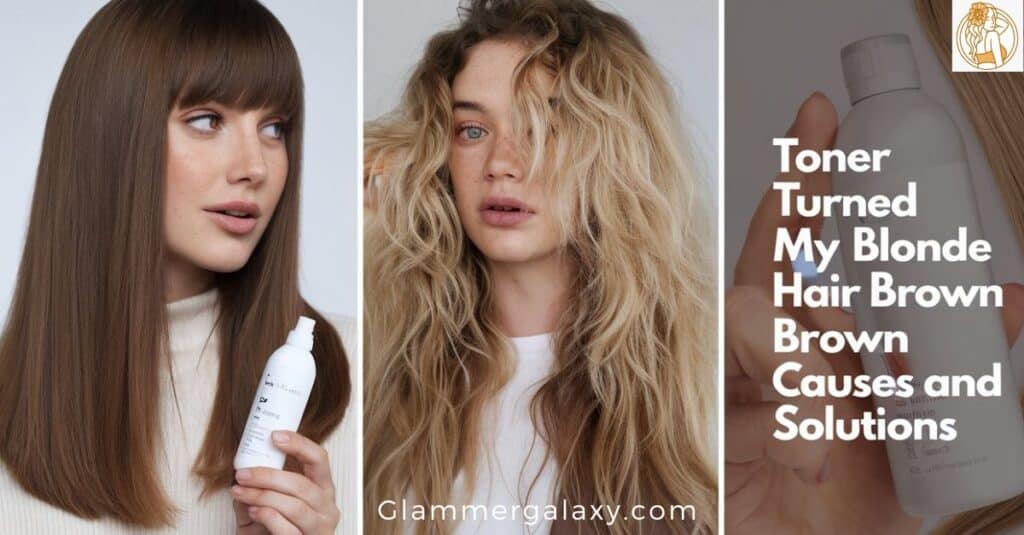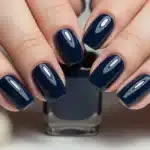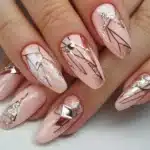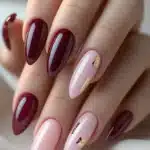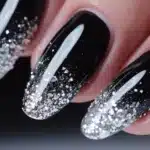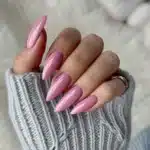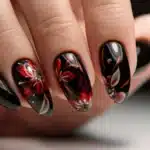If you’ve ever experienced the shock of toner turning your blonde hair brown, you’re not alone. This unexpected outcome can be frustrating and confusing, especially when toner is meant to enhance, not dramatically alter, your hair color.
In this comprehensive guide, we’ll discuss hair toning, explore the reasons behind this common mishap, and provide you with practical solutions to get your blonde ambitions back on track.
Understanding Hair Toner
Before we tackle the brown hair dilemma, let’s break down what hair toner actually is and how it’s supposed to work on blonde hair. This foundation will help us better understand why things sometimes go awry in the toning process.
What is Hair Toner?
Hair toner is a semi-permanent hair coloring product designed to neutralize or enhance specific tones in your hair. It’s often the final step in the hair coloring process, especially for those going blonde. Toners come in various forms, including:
- Glosses
- Demi-permanent colors
- Purple shampoos
- Toning masks
The primary purpose of toner is to:
- Neutralize unwanted brassy or yellow tones
- Add cool or warm tones to achieve a specific shade
- Enhance the overall appearance of colored hair
- Create a more natural-looking blonde
- Add shine and depth to lightened hair
Toners work by depositing a subtle wash of color onto the hair shaft. They don’t lighten the hair but rather refine the existing color. This is why toner is typically used after the hair has been lightened to the desired level.
The Chemistry Behind Toning
To understand why toner might turn blonde hair brown, we need to look at the science behind it. Hair toner works by depositing color pigments onto the hair shaft. These pigments are typically:
- Blue-violet (to counteract yellow tones)
- Green (to neutralize red tones)
- Ash (to cool down warm tones)
The effectiveness of toner depends on several factors:
- Current level of your hair color
- Underlying pigments in your hair
- Porosity of your hair
- Strength of the developer used
- Timing of the application
- pH level of the toner
When all these factors align perfectly, toner can create beautiful, nuanced blonde results. However, when something goes awry, you might end up with unexpected brown hair.
The color wheel plays a crucial role in understanding how toners work. Opposite colors on the wheel neutralize each other. For instance:
- Blue neutralizes orange
- Violet neutralizes yellow
- Green neutralizes red
This is why purple shampoos are popular for maintaining blonde hair – the purple pigments help to neutralize yellow tones that can make blonde hair look brassy.
Common Causes of Toner Turning Blonde Hair Brown
Now that we understand the basics of hair toning, let’s explore the main culprits behind this hair color mishap. Identifying the cause is the first step in preventing future issues and finding the right solution.
Incorrect Toner Selection
Choosing the wrong toner can lead to brown results, especially in these scenarios:
- Using ash-based toners on warm blonde hair: Ash toners contain blue or green pigments that can mix with existing warm tones to create a muddy brown appearance. This is particularly problematic for hair that hasn’t been lightened enough, as the underlying warm pigments can interact with the cool tones in the ash toner to produce an unintended brown result.
- Choosing a toner too dark for your base color: If your hair isn’t light enough for the toner you’ve selected, it can deposit too much pigment, resulting in a darker, browner shade. Toners are designed to work on specific levels of lightness, and using a toner meant for lighter hair on darker blonde can lead to over-saturation of color.
- Misunderstanding undertones: Failing to properly assess your hair’s underlying tones can lead to choosing a toner that exacerbates, rather than neutralizes, unwanted colors. For example, using a golden toner on hair with strong yellow undertones can intensify the warmth, potentially leading to a brassy brown instead of a cool blonde.
Application Errors
Even with the right toner, mistakes during application can lead to brown hair:
- Leaving toner on for too long: Toner continues to deposit color the longer it’s left on. Overprocessing can lead to an over-darkened result. This is especially true for hair that is very porous or damaged, as it will absorb toner more quickly and intensely.
- Uneven application: Inconsistent application can cause some areas to absorb more toner, creating patchy or overall darker results. This is often seen when toner is applied to dry hair or when it’s not distributed evenly throughout the hair.
- Applying toner to wet hair: While some toners are designed for wet application, using a dry-hair toner on wet strands can dilute the product and lead to uneven or unexpected results, including a darker overall tone.
- Not considering previous treatments: If your hair has undergone multiple chemical processes or has old toner build-up, new toner can interact unpredictably with these existing chemicals, potentially resulting in a brown shade.
Formulation Mistakes
The way toner is mixed and prepared can significantly impact the outcome:
- Wrong developer strength: Using a developer that’s too strong can open the hair cuticle too much, allowing excess pigment to penetrate and darken the hair. Conversely, a developer that’s too weak may not allow the toner to process properly, leading to uneven or unexpected results.
- Improper mixing ratios: Incorrect ratios of toner to developer can alter the intended color results, potentially leading to a browner shade. Too much toner in the mixture can oversaturate the hair with pigment, while too little can result in ineffective toning.
- Expired or contaminated products: Using old toners or developers can lead to unpredictable results, as the chemical composition may have changed over time. Always check the expiration dates and store products properly.
Hair Porosity Issues
The structure of your hair plays a crucial role in how it accepts toner:
- Overly porous hair: Highly porous hair can absorb too much toner, resulting in a darker color than intended. This is often seen in hair that has been heavily bleached or is damaged from heat styling or chemical treatments.
- Uneven porosity: If some sections of your hair are more porous than others, it can lead to patchy or overall darker results. This is common in hair that has been colored multiple times or has a mix of virgin and processed sections.
- Low porosity hair: Conversely, hair with low porosity may not absorb toner easily, leading to uneven results or the need for longer processing times, which can increase the risk of over-toning.
Understanding these causes is crucial for both preventing brown toner mishaps and addressing them when they occur. In the next section, we’ll explore preventive measures to ensure your toning process results in the blonde you desire.
Explore similar content : 14 Amazing Nails Colors Guide for Burgundy Dress
Preventing Toner from Turning Blonde Hair Brown
Armed with knowledge about what can go wrong, let’s look at how to prevent these issues and achieve the perfect blonde tone:
Proper Toner Selection
Choosing the right toner is crucial for achieving your desired blonde:
- Understand your hair’s undertones: Determine whether your blonde base has warm (golden) or cool (ashy) undertones to select a complementary toner. This can be done by looking at your hair in natural light or consulting with a professional colorist.
- Choose the right level of toner: Select a toner that’s no more than one level darker than your current hair color to avoid over-darkening. If in doubt, opt for a lighter toner – it’s easier to add more color than to remove it.
- Consider your desired outcome: Think about whether you want to neutralize brassiness, add warmth, or create a cooler blonde. This will guide your toner selection.
- Use a color wheel: Familiarize yourself with the color wheel to understand which tones will neutralize unwanted colors in your hair. For example, if your hair is too yellow, a violet-based toner can help neutralize it.
“The key to successful toning is choosing a toner that enhances your natural or lightened blonde, not one that fights against it.” – Celebrity Colorist, Rita Hazan
Correct Application Techniques
Proper application is essential for avoiding brown mishaps:
- Time the process accurately: Follow the manufacturer’s instructions and start checking your hair color after 5-10 minutes. Use a timer to ensure precision.
- Ensure even distribution: Apply toner evenly throughout your hair, paying special attention to the ends which can absorb color more quickly. Use a tinting brush for more precise application.
- Section your hair: Divide your hair into quadrants and work methodically to ensure no areas are missed or over-saturated.
- Consider root-to-tip application: If your roots tend to be more resistant to toner, start the application there and work your way down to the more porous ends.
- Use the right tools: Invest in proper tinting tools like brushes, bowls, and gloves to ensure a professional-level application.
Formulation Best Practices
Getting the mix right is crucial for achieving your desired blonde:
- Select the appropriate developer volume: For most toning purposes, a 10 volume developer is sufficient. Higher volumes can lead to over-processing.
- Mix toner and developer correctly: Follow the recommended ratios precisely, usually 1:2 (one part toner to two parts developer). Use a kitchen scale for accuracy if needed.
- Prepare the right amount: Mix only as much toner as you need to avoid waste and ensure consistent results.
- Check product freshness: Use fresh, unexpired products for predictable results.
Addressing Hair Porosity
Manage your hair’s porosity to ensure even toner absorption:
- Pre-toning treatments: Use a porosity equalizing treatment before toning to create a more uniform canvas. These treatments help to temporarily fill in porous areas of the hair shaft.
- Protein fillers: For very porous hair, consider using a protein filler before toning to prevent over-absorption. These products help to strengthen the hair and create a more even surface for toner application.
- Porosity test: Conduct a simple porosity test by placing a strand of clean, dry hair in a glass of water. If it sinks quickly, your hair is highly porous and may need extra care during toning.
Professional Consultation
When in doubt, seek professional advice:
- Consult a colorist: If you’re unsure about your hair’s undertones or the best toner to use, a professional consultation can save you from potential mishaps.
- Consider salon toning: For complex color corrections or if you’re new to toning, having a professional handle the process can ensure better results.
- Learn from experts: Attend hair coloring workshops or watch tutorials from reputable colorists to improve your toning skills.
By following these preventive measures, you significantly reduce the risk of your toner turning your blonde hair brown. However, if you do find yourself with unexpected results, don’t panic. In the next section, we’ll explore solutions for brown toner mishaps.
Solutions for Brown Toner Mishaps
If you find yourself with brown hair instead of blonde after toning, don’t despair. There are several approaches you can take to correct the situation:
Immediate Actions
Try these quick fixes first:
- Clarifying shampoo method:
- Wash your hair with a clarifying shampoo immediately after toning
- Repeat 2-3 times if necessary
- Follow with a deep conditioner to prevent dryness
- This method works by stripping away some of the newly deposited toner. It’s most effective when done immediately after toning.
- Vitamin C treatment:
- Mix crushed vitamin C tablets with clarifying shampoo
- Apply to damp hair and leave for 30-60 minutes
- Rinse thoroughly and condition
- The acidic nature of vitamin C can help break down toner molecules, facilitating their removal from the hair shaft.
- Dish soap and baking soda mix:
- Combine equal parts dish soap and baking soda
- Apply to damp hair and gently massage
- Rinse thoroughly and deep condition
- This method is more drying but can be effective for stubborn toner. Use cautiously and follow up with intense hydration.
Professional Color Correction Options
For more stubborn cases, professional help may be needed:
- Color removal techniques: A colorist can use specialized products to remove the unwanted toner without further damaging your hair. These may include:
- Color removers designed for semi-permanent color
- Gentle bleach baths
- Professional-grade clarifying treatments
- Highlighting to restore blonde tones: Strategic highlights can help break up the brown and reintroduce blonde dimension. This technique can be particularly effective for creating a natural-looking transition back to blonde.
- Color balancing: A professional colorist can apply a color balance treatment to neutralize unwanted tones and bring your hair closer to your desired blonde shade.
Gradual Fading Methods
If you’re not in a rush, these methods can help fade the toner over time:
- Regular washing with sulfate shampoos: While not ideal for hair health, sulfate shampoos can help fade toner more quickly. Use in moderation and always follow with a good conditioner.
- Sun exposure and natural fading: Spending time outdoors can naturally lighten your hair, but always use a heat protectant to prevent damage. Be cautious, as sun exposure can also lead to brassiness in blonde hair.
- Swimming in chlorinated water: Chlorine can strip color from hair. If you choose this method, be sure to wet your hair with fresh water before entering the pool and use a clarifying shampoo afterward to remove chlorine residue.
- Hot oil treatments: Regular hot oil treatments can help to gradually fade toner while nourishing your hair. Use natural oils like coconut or olive oil for best results.
Hair Care During Color Correction
While correcting your hair color, it’s crucial to maintain its health:
- Deep conditioning: Use intensive conditioning treatments at least once a week to combat dryness and damage from color correction processes.
- Protein treatments: Incorporate protein treatments into your hair care routine to strengthen hair that may have been weakened by toning or color correction.
- Heat protection: Minimize heat styling and always use a heat protectant when you do use hot tools.
- Gentle handling: Treat your hair gently, especially when wet. Use a wide-toothed comb and avoid tight hairstyles that can cause breakage.
Remember, patience is key when correcting hair color. Drastic measures can lead to further damage, so it’s often better to take a gradual approach to returning to your desired blonde shade.
The Fading Process: What to Expect
Understanding the fading process can help manage your expectations and guide your hair care routine as you transition back to blonde:
Typical Timeline for Toner Fading
| Week | Expected Results |
| 1-2 | Minimal fading, color may appear slightly less intense |
| 3-4 | Noticeable fading, especially in areas of high washing (around face) |
| 5-6 | Significant fading, original blonde may start to reappear |
| 7-8 | Most toner should have faded, leaving behind subtle tonal changes |
Keep in mind that this timeline can vary based on individual factors such as hair porosity, care routine, and the specific toner used.
Factors Affecting Fading Speed
Several factors can influence how quickly toner fades from your hair:
- Hair porosity: More porous hair tends to lose color faster than less porous hair.
- Frequency of washing: More frequent washing typically leads to faster fading.
- Type of shampoo used: Clarifying and sulfate-containing shampoos strip color more quickly.
- Exposure to sun and chlorine: These environmental factors can speed up the fading process.
- Use of heat styling tools: Excessive heat can cause color to fade more rapidly.
- Water quality: Hard water can affect how quickly toner fades and may deposit minerals that affect hair color.
- Initial toner application: If the toner was applied correctly and evenly, it may last longer than an improperly applied toner.
Maintaining Hair Health During the Fading Process
As your toner fades, it’s important to keep your hair healthy:
- Deep condition regularly: Use a deep conditioning treatment once a week to combat dryness and maintain hair elasticity.
- Use color-safe products: Even as you’re trying to fade the toner, using gentle, color-safe products will help maintain overall hair health.
- Minimize heat styling: Reduce the use of hot tools to prevent further damage and color fading.
- Protect hair from sun and chlorine exposure: Use UV-protective products and wear a hat when in the sun. Wet your hair with fresh water before swimming to minimize chlorine absorption.
- Balance protein and moisture: Use both protein treatments and moisturizing products to keep your hair strong and hydrated.
- Regular trims: Get your hair trimmed every 6-8 weeks to remove any damaged ends and maintain hair health.
Have a look at this interesting article: Hair Tinsel on Curly Hair: The Ultimate Glamour Guide
Expert Tips for Successful Toning

To avoid future toning mishaps and achieve the blonde of your dreams, consider these professional tips:
- Strand testing: Always perform a strand test before full application to gauge how your hair will react to the toner. This small step can save you from major color disasters.
- Use purple shampoo: Incorporate a purple shampoo into your routine to maintain your blonde and prevent brassiness between toning sessions. Use it 1-2 times a week, or as needed based on your hair’s brassiness.
- Regular deep conditioning: Keep your hair healthy and less porous with weekly deep conditioning treatments. This will help your hair accept toner more evenly in the future.
- Consult a professional: When in doubt, seek the advice of a professional colorist, especially for significant color changes or if you’re new to hair coloring.
- Understand your hair’s level: Learn to assess your hair’s level of lightness accurately. This will help you choose the right toner and avoid over-darkening.
- Invest in quality products: Use professional-grade toners and developers for more predictable and lasting results.
- Maintain a consistent hair care routine: Regular care with color-safe products will help maintain your tone between salon visits or at-home toning sessions.
- Document your process: Keep a hair journal noting the products used, mixing ratios, and processing times. This can help you replicate successful results and avoid past mistakes.
- Consider your overall look: Choose a blonde tone that complements your skin tone and eye color for the most flattering results.
- Be patient: Achieving and maintaining the perfect blonde often takes time and multiple sessions. Don’t rush the process, as this can lead to damage and undesired results.
When to Seek Professional Help
While many toning issues can be resolved at home, there are times when professional intervention is necessary:
Signs That Indicate Professional Help is Needed
- Extremely uneven or patchy color
- Severely over-darkened hair
- Damaged or overly dry hair after attempting home remedies
- Desire for a dramatic color change
- Multiple failed attempts at correcting the color at home
- Uncertainty about the best course of action for your specific hair type and condition
Benefits of Salon Color Correction
Seeking professional help can offer several advantages:
- Access to professional-grade products: Salons have access to high-quality color correction products not available to the general public.
- Expertise in complex color chemistry: Professional colorists understand the intricacies of color theory and can create custom solutions for your specific situation.
- Ability to customize solutions: A stylist can tailor the correction process to your hair’s unique needs and your desired outcome.
- Minimized risk of further damage: Professionals know how to correct color while minimizing damage to your hair.
- Time-saving: What might take multiple attempts at home can often be resolved in one or two salon visits.
- Long-term hair health: A professional can guide you on maintaining your color and keeping your hair healthy between appointments.
Remember, investing in professional help can often save you time, money, and stress in the long run, especially when dealing with complex color corrections.
FAQs
To further clarify common concerns about toning blonde hair, here are some frequently asked questions:
Q: What volume developer should be used with toners for blonde hair?
A: For most toning purposes, a 10 volume developer is sufficient. This lower strength helps minimize damage while still allowing the toner to deposit color effectively. Here’s a quick guide:
- 5 volume: For deposit-only toners, no lifting action
- 10 volume: Standard for most toning processes
- 20 volume: Use cautiously, only when slight lifting is needed alongside toning
Q: How can I maintain my toned blonde between salon visits?
A: To maintain your toned blonde:
- Use purple shampoo 1-2 times a week
- Avoid excessive heat styling
- Use color-protective products
- Minimize sun and chlorine exposure
- Deep condition regularly to maintain hair health
Q: Is it normal for my hair to look darker right after toning?
A: Yes, it’s common for hair to appear darker immediately after toning. This is because the hair is saturated with the toner. The color usually settles and lightens slightly over the next few days as you wash your hair. If the color remains too dark after a week, consult your stylist.
Q: Can toner damage my hair?
A: When used correctly, toner shouldn’t cause significant damage. However, overuse or improper application can lead to dryness or brittleness. Always follow instructions carefully and maintain a good hair care routine to minimize potential damage.
You might like reading : 25+ Ideal Nail Colors to Complement Black Dresses
Conclusion
The journey to perfect blonde hair can sometimes take unexpected turns, like ending up with brown locks after toning. However, armed with the knowledge of why this happens and how to prevent it, you’re now better equipped to achieve and maintain your desired blonde shade.
Remember, successful toning is as much an art as it is a science. It requires understanding your hair’s unique characteristics, choosing the right products, and applying them correctly. When in doubt, don’t hesitate to consult with a professional colorist who can guide you through the process and help you achieve the blonde of your dreams.
Key takeaways from this guide include:
- Understanding the science behind hair toning
- Recognizing common causes of toning mishaps
- Implementing preventive measures for successful toning
- Knowing how to correct brown toner results
- Maintaining healthy hair throughout the blonde journey

Sarah Williams is an experienced blogger and fashion enthusiast at Glammer Galaxy. With a passion for beauty and style, she shares expert insights on hair trends, nail art, and fashion tips. Her creative flair and years of experience make her a go-to source for all things glam!

